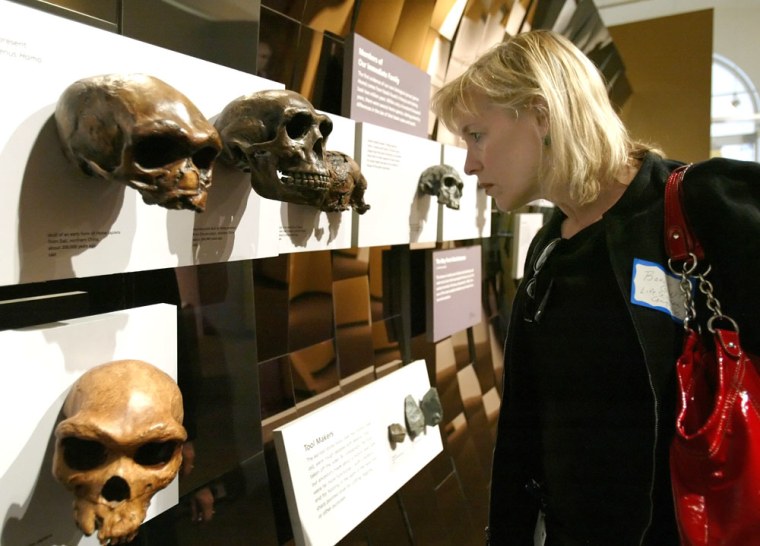A new exhibit at the University of Pennsylvania about human evolution gives a new meaning to the expression “nobody’s perfect.”
Scientists say we have evolution to thank for our survival, but that it’s also where we can point the finger when we experience backaches, impacted wisdom teeth or difficulty giving birth.
The remarkable yet imperfect process that has brought homo sapiens to where we are now, and where it might take us down the road, is the theme of “Surviving: The Body of Evidence,” at the Penn Museum of Archaeology and Anthropology.
An exhibit five years in the making, it uses fossils and interactive multimedia displays to tell the story about how the human race adapted, thrived and continues to evolve. It leaves Penn in May 2009 for a multi-city tour including stops at the Cleveland Museum of Natural History and The Health Museum in Houston.
The exhibit’s message, right down to the title, is that finding evidence of the evolutionary process is as simple as looking at ourselves.
“You are a living artifact of evolution,” said Janet Monge, co-curator of the exhibit. “We didn’t want it to be something remote. It’s about you — you’re the artifact and this will tell you why.”
Visitors can stand toe-to-toe with a skeleton cast of 3.2 million-year-old “Lucy,” one of the world’s most famous fossils, and children can see how they measure up to Nariokotome Boy, a nearly complete skeleton discovered in Kenya of a child who lived 1.6 million years ago.
Also included are more than 100 touchable casts of fossil bones and skulls from the evolutionary history of primates and humans.
The show is more focused on concepts rather than artifacts, however, and is replete with child-friendly interactive elements such as peek holes, sliding panels and video monitors.
A 16-foot-long figure of a woman with transparent plastic skin, nicknamed “JaMo” in honor of Monge, is the centerpiece of the show. Stationed around the recumbent figure will be interactive display screens using animation and 3-D graphics illustrating how and why our muscles, bones and joints evolved and their complex interplay that allows us a wide range of movement.
The exhibit also highlights what might be considered evolution’s hiccups: the imperfect results of the evolutionary process common to people around the world, such as stiff backs and pelvic bones that haven’t adapted to the larger brain size of newborns, making childbirth difficult for many women.
“The important aspect we tried to capture ... is evolution isn’t just an interesting scientific idea,” said Alan Mann, exhibit co-curator. “We wanted to let everybody know what it means to be a product of evolution.”
The show also provides an unequivocally scientific message about what remains a topic of debate in some places more than 80 years after the Scopes monkey trial.
Even as understanding is growing exponentially because of advances in genetics and biology, “many Americans don’t understand evolution, they mistrust it, they don’t get it,” said Andrew Binns, Penn associate provost for education. That’s why exhibits like “Surviving” are so important as educational tools for children and adults, he said.
It’s also a stepping off point for a citywide “Year of Evolution” sponsored by Penn and featuring additional events at The Academy of Natural Sciences, the Philadelphia Zoo, The Franklin Institute, the American Philosophical Society Museum and the Mutter Museum of the College of Physicians of Philadelphia.
Timed to coincide with the approach of Charles Darwin’s 200th birthday and the 150th anniversary of his seminal work “On the Origin of Species,” both happening in 2009, programs will include exhibits and lectures on Darwin and geneticist Gregor Mendel, IMAX movies, and other events for children and families.
The “Year of Evolution” itself is an evolution of “Darwin Day” festivities, an effort at Penn and elsewhere to highlight evolution in science and counter “intelligent design,” a concept favored by some religious conservatives.
Supporters of intelligent design hold that the order and complexity of the universe is so great that a supernatural entity must have created it. The concept’s critics see it as creationism masquerading as science, and a battle is ongoing in several states about whether it should be taught in public schools.
